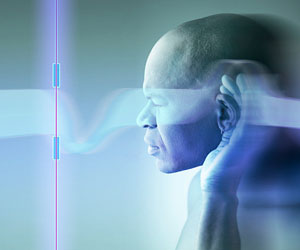Did You Hear That? Specific Brain Activity Linked With Imagined Hearing
Being able to distinguish what is real and what is not may seem pretty basic, but the inability to perform this task could be a marker of many psychiatric disorders. This task, known to researchers as “reality monitoring,” is at the core of a study from scientists at Yale University.
Previous research has demonstrated that there are specific brain areas related to whether a person correctly identifies a visual stimulus as something that actually happened or was “self-generated.” Researchers Eriko Sugimori, Marcia Johnson, and colleagues at Yale University hypothesized that this relationship may not be specific to just the visual system, and that specific brain activity may also distinguish heard and imagined words.
 To find out, the researchers had participants undergo an auditory task in a functional magnetic resonance imaging (fMRI) scanner.
To find out, the researchers had participants undergo an auditory task in a functional magnetic resonance imaging (fMRI) scanner.
The participants were shown a cue on a computer screen telling them whether they would hear a word, imagine a word spoken by a recorded male voice, or see a shape. After this cue, they were presented with the given word or shape and then instructed to rate from 1-3 on how well they heard or imagined the word, or rate whether the shape was more square or circular.
Approximately five minutes after the scan, the participants completed a test in which they were shown a word on screen and asked to indicate whether they had heard the word, imagined the word, or if the word had not been presented.
The researchers analyzed the fMRI data and found that increased activity in the left middle frontal gyrus (MFG) during encoding for imagined words was associated with correctly identifying them as “imagined” later. And an area of the left inferior frontal gyrus (IFG) showed greater activity during encoding for words that were later reported as “heard” versus “imagined,” regardless of the actual source of the word.
Intriguingly, the fMRI data also showed that activation in the superior temporal gyrus (STG) for mistakenly “heard” items was greater for participants who were more prone to auditory hallucinations (as measured by the Auditory Hallucination Experience Scale).
Temporal regions of the brain, like the STG, are often involved in processing auditory information, and the researchers hypothesized that errors in reality monitoring might occur when STG activity is increased during auditory imagination – that is, increased activity in the STG may provide a false signal that a word was heard when it was only imagined.
“It may be that people prone to auditory hallucinations are good auditory imagers — that is, they relatively effortlessly or spontaneously produce vivid auditory imaginations that rival those of actually heard words,” Sugimori and colleagues write.
The researchers believe these findings may be important for identifying neural correlates of behavior in certain psychiatric populations, including individuals diagnosed with schizophrenia, for whom hallucinations are symptoms associated with the illness.
![]()
Sugimori, E., Mitchell, K., Raye, C., Greene, E., & Johnson, M. (2014). Brain Mechanisms Underlying Reality Monitoring for Heard and Imagined Words Psychological Science, 25 (2), 403-413 DOI: 10.1177/0956797613505776




APS regularly opens certain online articles for discussion on our website. Effective February 2021, you must be a logged-in APS member to post comments. By posting a comment, you agree to our Community Guidelines and the display of your profile information, including your name and affiliation. Any opinions, findings, conclusions, or recommendations present in article comments are those of the writers and do not necessarily reflect the views of APS or the article’s author. For more information, please see our Community Guidelines.
Please login with your APS account to comment.